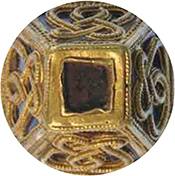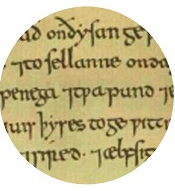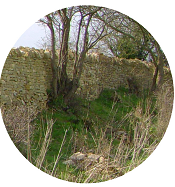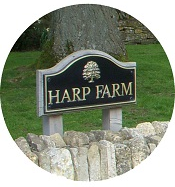This dataset, in txt format, brings together information on Early Anglo-Saxon burials in southern England
Sue Harrington and Stuart Brookes
UCL Institute of Archaeology
25/07/2019
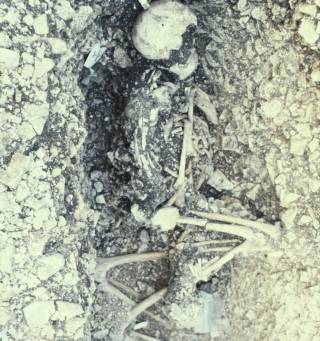
The tables presented here contain the base line research data of the Leverhulme Trust funded project Beyond the Tribal Hidage: the early Anglo-Saxon kingdoms of southern Britain AD 450-650, directed by the late Martin Welch at UCL Institute of Archaeology 2006-9. Here are listed 834 burial sites, 12,379 buried individuals and 26,043 associated objects. The individuals were at the heart of the research project, each given a unique identifier tying them to place and linking them to objects. We conceptualised the process of data gathering as building a census of early Anglo-Saxon peoples in the region south of the River Thames and east of the River Parrett. It was a long-held ambition by Martin to update Audrey Meaney’s formidable gazetteer of Early Anglo-Saxon burials sites, published in 1964 and we are pleased to include downloadable pdfs of that volume within our reference materials here. Our original data collection ceased in 2007, but this edition of the census has been updated to include more recently published and unpublished sites (our grateful thanks to all those who gave us new material).
There are many ways to approach the issues of the Anglo-Saxon evidence on the island of Britain. Our research data included many quantitative and qualitative assessments that are not given here. We focussed on placing the cemetery communities against a background of the productive capabilities of the environment in which they were settled, the availability of raw materials, evidence for metalworking and other craft activities, and communication and trade routes, and drew on a range of inferences to aid our interpretations. Our research was published in 2014, but this is not a definitive statement about these communities – there is much more to be explored and it is intended that the data so assembled will act as a reliable starting point for new investigations by future generations of researchers.
If you find any errors or wish for ammendments to be made, please contact, for database enquiries: s.brookes@ucl.ac.uk; for content enquiries: s.harrington@ucl.ac.uk
Downloads
| Metadata | 725 KB | |
Sites: List of early medieval burial sites, giving locational information, bibliographic references, site type and dating | txt | 159 KB |
Individuals: Unique entry for each excavated individual, providing basic biological information, and burial rite | txt | 1,045 KB |
Objects: Listing of objects recovered from each excavated grave/cremation. giving their type, quantity and material composition. | txt | 2,665 KB |
| References: List of references cited in Sites table | 782 KB |
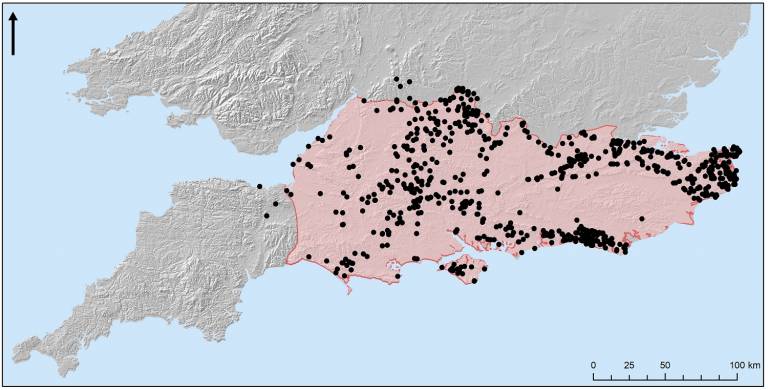
Distribution map of early medieval burial sites in southern England
Audrey Meaney Gazetteer
Permission has been granted to reproduce in full Audrey Meaney's (1964) A Gazetteer of Early Anglo-Saxon Burial Sites (London: Unwin). Individual sections can be downloaded as pdfs using the following links
| 0. Introduction | 3.1 MB | |
|---|---|---|
| 1. Bibliography | 2.3 MB | |
| 2. Bedfordshire-Berkshire | 6.4 MB | |
| 3. Buckinghamshire-Essex | 10.1 MB | |
| 4. Gloucestershire-Huntingdonshire | 5.0 MB | |
| 5. Kent | 10.3 MB | |
| 6. Lancashire-Norfolk | 12.7 MB | |
| 7. Northamptonshire-Rutland | 8.9 MB | |
| 8. Somerset-Surrey | 8.1 MB | |
| 9. Sussex-Worcestershire | 10.1 MB | |
| 10. Yorkshire-Scotland | 7.0 MB |
Further Reading
- Harrington, S. and Welch, M. 2014. The Early Anglo-Saxon Kingdoms of Southern Britain AD 450–650. Beneath the Tribal Hidage. Oxford: Oxbow Books.
- Brookes, S. and Harrington, S. 2013. Electronic Census: enhancing or masking individuality in the early Anglo-Saxon past? In B. Ludowici (ed.), Individual and Individuality. Approaches towards an Arch-aeology of Personhood in the First Millennium AD. Neue Studien zur Sachsenforschung 4, 21–6.
- Harrington, S. 2008. Aspects of Gender and Cratf Production in the European Migration Period. Iron weaving beaters and associated textile making tools from England, Norway and Alamannia. BAR International Series 1797
- Brookes, S. 2007. Economics and Social Change in Anglo-Saxon Kent AD 400-900: Landscapes, Communities and Exchange. British Archaeological Reports 431.
- Brookes, S., Harrington, S. and Welch, M. 2006. Documenting the dead: creating an on-line census of Anglo-Saxon burials from Kent. Archaeology International 2005/2006, 28–31.

 Close
Close


